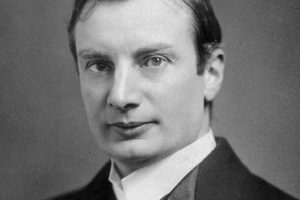
Waldemar Haffkine
At the turn of the 20th century, Waldemar Mordecai Haffkine created the world’s first vaccines for cholera and plague and used them very successfully in India. Yet, one contaminated bottle of vaccine ruined Haffkine’s career.
A Russian Jew by birth, Haffkine studied zoology in Odessa. He had to leave Russia because he took a stand against anti-semitism. He ended up as an assistant librarian at the Louis Pasteur institute – then the world’s leading centre of bacteriology research. In his free time, Haffkine did experiments in the bacteriology lab and created a vaccine for cholera. Up until that point, diseases like cholera had been thought of in miasmatic terms – that they travelled in bad air – and tackled with broad spectrum treatments. But Haffkine had created a vaccine by cultivating and attenuating the bacterium.
On 18 July 1892, Haffkine injected himself with attenuated cholera. He suffered a fever for several days but recovered fully. He then inoculated three Russian friends and then several other volunteers. When each suffered no worse reaction, Haffkine was convinced he had a viable vaccine for wider testing.
Haffkine went to India in 1893 to test his vaccine, but he was met with scepticism and resistance from the British medical establishment and the Indian public. He was not a doctor but a mere zoologist! Further, at that time international bacteriology was riven with factions and mutual suspicions. The tide turned, however, when he tested his vaccine in the crowded slums of Calcutta. The results were very good and he conducted large scale trials on thousands of plantation workers in Assam.
Meanwhile, the world’s third plague pandemic reached Bombay and the governor sought Haffkine’s help. With bare facilities, Haffkine developed a plague vaccine in record time. On 10 January 1897, Haffkine injected himself with the vaccine. He experienced a severe fever but recovered after several days. When the plague broke out in the Byculla prison, Haffkine tested his vaccine with success. Within a year, hundreds of thousands of people were inoculated using Haffkine’s vaccine, saving untold numbers of lives. He was knighted by Queen Victoria, and in December 1901 he was appointed director-in-chief of the Plague Research Laboratory, Bombay, with new facilities and staff.
In March 1902, however, there was a disaster: In the village of Mulkowal in Punjab, 19 people died from tetanus after being inoculated with Haffkine’s vaccine. The 88 others inoculated that day were fine. The cause was the contamination of one bottle of the vaccine that came from Bombay.
Though the contamination occurred to negligence of an assistant in Punjab, Haffkine was held responsible and was fired as director of the plague lab and placed on leave from the Indian Civil Service. Many leading researchers came to his defence and he was reinstated in 1907. He returned as director in chief of the Calcutta Biological Laboratory, but he was barred from carrying out any trials, limiting him to theoretical research. His vaccine research was ruined. In 1914, Haffkine retired from the Indian Civil Service and left the country. He never married and lived his final years alone in Lausanne, Switzerland, where he died in 1930.
During those years, the Haffkine plague vaccine saved millions of lives in India. In 1925, five years before his death, the Indian government agreed to rename the Bombay lab as ‘The Haffkine Institute’ and the name remains to this day. It is said to be working now on the corona virus pandemic!
Afterword: This story is based on a BBC report.
